Mother-Daughter Anti-Communication And How To Fix It
MOTHER-DAUGHTER ANTI-COMMUNICATION AND HOW TO FIX IT (Issue 19)
by Diane Gold
 It is the difficult interaction between mothers and daughters that requires all the courage in the world. The way this mom and daughter are communicating can be classified as ANTI-COMMUNICATION. Not all families experience it. Most do. But there’s no mistaking it when it starts to break down and erase effective human interchange. Every word exchanged or action shared sets the other off.
It is the difficult interaction between mothers and daughters that requires all the courage in the world. The way this mom and daughter are communicating can be classified as ANTI-COMMUNICATION. Not all families experience it. Most do. But there’s no mistaking it when it starts to break down and erase effective human interchange. Every word exchanged or action shared sets the other off.
The cause is always internal to the individual, although it feels as if a razor gun is being pointed at us by the other person at the moment of deepest struggle. This very human tipping point occurs when neither the mom nor the daughter speaks to communicate. Each speaks at each other with anger, frustration, bravado, hurt, resentment, exhaustion, despair, disappointment, sadness. (Writing this brings back many memories of my speaking cruelly to my mom because of my own weaknesses. I don’t know how she handled it, other than that she was my mom and it was her job of love.)
True, the mom is the adult and authority and, according to one assessment, is the one who chooses whether to fix the situation or not. But this is often easier to say as an outsider that when it is happening in our lives right then and there.
Because there are so many people struggling with their daughters, I am going to include below an excerpt from my new consulting package.
Upon first glance, it looked as though the mom in our story is at her breaking point because she yells (or rages) instead of mediating in response to her daughter’s tantrums. But let’s take a closer look at why this is. This mom works 10-hour days, 6 or 7 days a week, has no support from and difficulty with other family members, has no health insurance which might help to pay for counseling, has other financial challenges which most of us have and is dealing with her daughter’s maturity, puberty and rebellious nature, common in the teen years.
The daughter has her school frustrations, issues with extra weight, also so common in puberty, fights with her sibling and is a latch key teen whose parents do not come home from work until 9 at night.
As one mom said when asked what she would do to help the communication between the mom and the daughter; she would sit down with the daughter and tell her what the rules are today. I agree with this. and believe that the rules that the mother wanted had not been clearly outlined to the daughter before the problems started. Now that the difficulties are here, clarification is one of the best strategies.
If the mother-daughter relationship is volatile, it is highly unlikely that the daughter will sit with the mother unless another program is brought in that is run by a third person. Eventually, the daughter will trust the mom again, especially when the mom shows that she will give up ultimate control, temporarily, for the sake of her daughter.
That’s where my step-by-step consulting program comes in.
The following information is an excerpt from Diane Gold’s Step-By-Step 24 Consulting. By reading this, we ask that you not take pieces of this program and use them. Either use the whole sequence or don’t use it at all. It is simple, involves a consultant or third person for accountability and accuracy and requires faith in self.
Furthermore, if you choose to read it, we ask that you not repost it. Also, please report how the experience goes by leaving comments using the feedback info below.
INITIAL MOTHER/DAUGHTER COMMITMENTS REQUIRED TO BEGIN
1) Both mom and daughter agree to include a consultant, middle person or mediator and no other person shall be present in a beginning consult. A professional with experience is preferred, even if it a volunteer.
2) Both mom and daughter agree to have this consult at a table outside the house or work, even if it’s in a public library or a beach picnic table. It is preferred that the table be 3 feet or more wide and 5 feet or more long.
3) Both mom and daughter agree to answer, honestly, questions about themselves.
4) Both mom and daughter decide whether to be recorded so that they can review their session, learn from it, remember it and pass it on to help others.
5) Mom and daughter agree not to discuss the specifics of this consult or anything about the program, itself, with any other family member or friend or school mate until directed to by the consultant, other than that she is involved in a special consulting or counseling program for a week. The reason for this is that not every family member or friend will agree with the technique, and the decision to go ahead with it should be the decision of the mom and the daughter. No one else. Therefore, no comments from anyone can be helpful at this point. And objections from others will be hurtful.
For those families who tell each other everything, I want you to think back to the time that you didn’t tell the family about the abdominal gas you experienced from the spicy food you ate last month. This will make you recognize that you don’t share everything and that there is a time and a place for optimal sharing. Once there is success, there will be time to share.
MOM & DAUGHTER FIX – ONE WEEK COMMITMENT WITH RIGHT TO QUIT IN ONE DAY
1) Mom and daughter commit to work very hard to let their interactions with other family members be separate from this very special interaction with each other. They will both do this by a hand shake or hug each morning or night.
2) Mom and daughter commit that for this one week, shorter or longer as decided by joint decision of mom and daughter, no added questions will be asked other than those written into the program.
3) When times get tough, mom and daughter will remember this is only a one week commitment with the right to quit at the end of the day. But during the day that is committed, follow the protocol.
HERE ARE THE RULES
1) No interaction is left to chance, so all rules must be followed. Everything is planned to result in specific, civil interaction with clear progressive outcome so that there are no misunderstandings and so that both people agree to and know the new rules.
2) Mom and daughter will carry matching notebooks with this printed information in it and a pen with which to write. Both will have them available at all times (not left in car or school). The notebook must be completely blank and unused to start. No exceptions.
3) Mom and daughter will refer to the rule page every time when interacting at the specific time of day or for the specific activity.
4) Mom will buy daughter an alarm clock if she doesn’t have a working or loud enough one, teach her to use it and watch her daughter demonstrate that it works.
5) Mom will give up the responsibility of waking her daughter and transfer it to her daughter. She will require her daughter to wake up on her own. If daughter does not get up on time, she will miss her breakfast which is scheduled at a specific time in 11) below or her bus or both. Mom’s (who have a car) will drive daughter to school only 1X a month for missing the bus because of getting up late.
6) Mom commits to her daughter, even though she doesn’t have to, that she will say please when she gives a command, to show respect to the daughter.
7) Daughter commits to her mom that she will acknowledge the command by saying, “I don’t like this, but I will do this for you, because you are my mom and I respect you.”
8) Mom and daughter will not yell for the week of the program. Each can dream about the end of the week when she can yell, if this helps. When/if one person makes a mistake and yells, the other will put up the index finger as a reminder of this commitment (vertical only, no pointing). The mom will accept this behavior from her daughter as part of the week of training and consider that it is not a disrespectful act. The one who is not yelling will ask the following questions of the one who is yelling. If both are yelling, use the 1-2-3 shoot method or the dice method in 16) below to determine who asks first.
a. What emotion are you feeling that made you yell?
b. How long ago in minutes did you start feeling it?
c. What was one good thing that happened in your day, today?
9) No blaming words will be used at any time. When one of you finds the other blaming, the one who is not blaming will raise the index finger as reminder described in 8) above and ask
a. What emotion are you feeling that made you use blame words?
b. How can I help?
and declare
c. I respect you.
10) Mom and daughter will not whine or complain during the course of the program. When either feels the need to do it, she shall write it down in her notebook with the date, time, feeling she is having and reason she thinks she is having it.
11) Breakfast will be served at ___ o’clock. Breakfast will be over at ____ o’clock (20 minutes later). These blanks are to be filled in by the mom. Daughter will be required to be at table at this time if she wishes to have breakfast. Mom will choose and prepare breakfast which will be cleaned up promptly at the closing time. No exceptions.
12) Lunch will be prepared by daughter the night before to take to school. No lunch money for this week. Having the daughter take responsibility for her lunch will get her to plan ahead and see the consequences of not doing it.
13) If Mom works late and daughter is home alone, mom will
a. call her daughter at 4 o’clock (or when daughter will be home from school) to ask
i. How the day went
ii. What homework she has.
iii. What future tests or work she has.
iv. Tell her she loves her and is happy they are working together.
v. Tell her what snack is available to eat.
b. Call her daughter at 6 o’clock when mom will ask daughter to make her lunch for the next day (so that daughter can help out financially by saving money, even if the family does not have a financial hardship), plan what she would like available for the next day’s dinner and ask her to eat dinner.
c. Mom will call daughter at 8 o’clock to see whether she has cleaned up after dinner and to see whether she has made her lunch.
14) Daughter will
a. Respond cheerfully when mom calls.
b. Wait for those 3 times to speak to mom, unless she has an emergency.
c. Ask mom how her day was.
15) Daughter is responsible to do her homework.
16) Mom and daughter will decide whether or not to continue this program for another day in step 15).
17) At end of day, mom and daughter will step outside or go into a basement, garage, park, quiet room to ask each other 2 questions and say 1 affirmation. Each will listen to the words of the other. No other questions may be asked about this process during this week.
a. What did I like about the way we spoke to each other today?
b. What did I learn about myself today?
c. I affirm that I am ready to work with you tomorrow.
The person who answers first will be determined by the 1-2-3 shoot method, extending 1 finger or 2. The daughter wins if the number is odd. The mom wins if the number of fingers is even. Or, if inside, roll the dice if you have real ones or go to: http://www.bgfl.org/bgfl/custom/resources_ftp/client_ftp/ks1/maths/dice/ and use the six sided ones.
18) If mom and daughter are finishing the 7th day, mom and daughter will decide together whether they wish to continue to week two.
CONCLUSION
When we are so entwined in getting through the day, we sometimes forget about respecting each other and sometimes take each other for granted. No matter how bad our mother-daughter situation is, we are family. It is our duty as parents to see the light at the end of the tunnel and to lead our daughters there. We would protect them with our lives against an attacker; we must also endure the pain of forming them and reforming them again in the harder struggle of day-to-day living.
I was extremely fortunate that my mother forgave everyone immediately if needed and started each day with a clean slate. I live this way because of her. I don’t know how she survived my difficult behavior, which was much worse than a lot I have seen. But she was a mom. And she championed through it for me. (Thanks, Ma.) She also reached out to a support structure of professions for help.
Part of the forgiveness that we may need includes listening to our children’s ideas and frustrations even though we are so tired that we think we will drop. It also includes setting up a structure for our children right now, if one has not been set up beforehand or if that one has fallen apart, so that our children have a framework from which to live. As much as kids like to be independent, they need a foundation from which to be independent.
Part of the forgiveness children need may come from seeing their parents as human beings. This is pretty hard before you are a parent.
As the above set of techniques indicates, one step at a time can do wonders. When we answer questions about ourselves, we are directing ourselves away from slanderous talk about the other in the relationship and allowing the other to get to know us. When we follow through on goals for a day at a time, we have a great chance of succeeding at them and, ultimately, learning new ways of relationship building.
There are many free services available in the United States for getting help. If you don’t have the time to find them, please contact me and I will try to help. Watch for the opening of StepByStep24.com, where you will be able to take advantage of our one week trial and our entire consulting package. It’s an excellent program that will allow you to feel in control, powerful and bonded with your daughter. Get ready for this package. We will help you with an advocate for the program, too. May the force of one step get you to the next.
_______
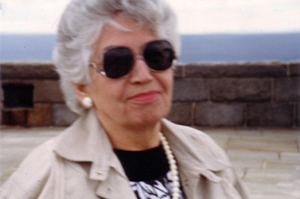
This piece is dedicated to my mom, Gertrude Gold Koplowitz, and to all the mothers and daughters out there who are having a hard time making sense of their relationship with each other. There are many ways we can get along with happiness. We just have to work together to find them.
FEEDBACK
Please leave your comments below and follow us on Twitter at WarriorsOWeight.
______
DIANE GOLD, AUTHOR
Diane Gold, Founder of Warriors of Weight, Moms For Healthy Daughters, is a mentor in tai chi, kung fu and meditation, a consultant in music and stress and a dedicated mom. She has seen untapped powers become available in the name of love. She says, “We must place our frustrations in a box outside the door and access our reserve strength in the name of helping and saving our daughters.”

 One way we measure our weight is by using the Body Mass Index. A great way to measure what this index defines is to feel whether or not we can pinch much excess skin around our body. If we can, we are probably carrying extra weight (which scientists have deemed is unhealthy for our organs, our body systems and emotionally), and we have just used a less clinical, simpler method of defining whether our body mass index is high. There are suggestions below as to what to do should we find this in ourselves. The result of this index is what people usually see when they look our way.
One way we measure our weight is by using the Body Mass Index. A great way to measure what this index defines is to feel whether or not we can pinch much excess skin around our body. If we can, we are probably carrying extra weight (which scientists have deemed is unhealthy for our organs, our body systems and emotionally), and we have just used a less clinical, simpler method of defining whether our body mass index is high. There are suggestions below as to what to do should we find this in ourselves. The result of this index is what people usually see when they look our way. Craving food is like any other urge. It is physiological, (1) sometimes set off by emotions which activate chemicals and (2) sometimes set off by chemicals which trigger emotions and reactions. We must become educated and sensitive to our situation, instead of taking the ostrich approach. What I mean is that we can feel great about ourselves with a little book knowledge and a little self-love. Knowledge truly gives us the power we need not to bury our heads in our pillow in hopelessness the same way as the ostrich in this graphic is burying his head in the sand. There is a prejudice about the ostrich from which this image comes. He does not bury his head in the sand. The male ostrich digs such a deep hole for the protection of the ostrich eggs [5-6 feet] that it looks as if his head is buried in the sand. It is not. To avoid making judgments without full awareness, we need to educate ourselves.
Craving food is like any other urge. It is physiological, (1) sometimes set off by emotions which activate chemicals and (2) sometimes set off by chemicals which trigger emotions and reactions. We must become educated and sensitive to our situation, instead of taking the ostrich approach. What I mean is that we can feel great about ourselves with a little book knowledge and a little self-love. Knowledge truly gives us the power we need not to bury our heads in our pillow in hopelessness the same way as the ostrich in this graphic is burying his head in the sand. There is a prejudice about the ostrich from which this image comes. He does not bury his head in the sand. The male ostrich digs such a deep hole for the protection of the ostrich eggs [5-6 feet] that it looks as if his head is buried in the sand. It is not. To avoid making judgments without full awareness, we need to educate ourselves. In my constant endeavor to understand what is going on in schools, it has been one of my big concerns to comprehend the lack of emphasis on nutrition in schools in this country.
In my constant endeavor to understand what is going on in schools, it has been one of my big concerns to comprehend the lack of emphasis on nutrition in schools in this country. The choice of food is also crucial. I once had a student who stopped at a well-known fast food drive through (which I won’t name to avoid any publicity!) every morning and wondered why her daughter was complaining of stomach ache every day and systematically missed the first class.
The choice of food is also crucial. I once had a student who stopped at a well-known fast food drive through (which I won’t name to avoid any publicity!) every morning and wondered why her daughter was complaining of stomach ache every day and systematically missed the first class.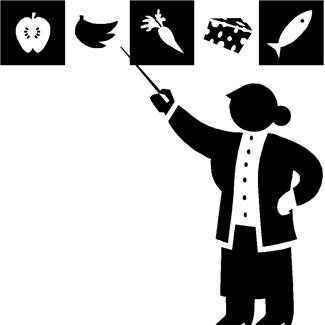 Worse still, very little is taught about practical, everyday nutrition. Yes, in biology class, students learn about the different food groups; they learn about carbs, fats and sugars…But kids are not taught to EAT the right way.
Worse still, very little is taught about practical, everyday nutrition. Yes, in biology class, students learn about the different food groups; they learn about carbs, fats and sugars…But kids are not taught to EAT the right way.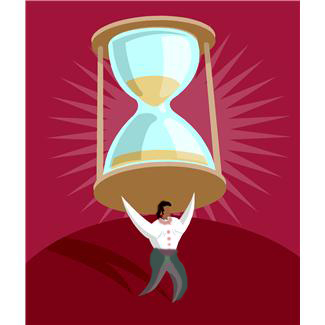 In the past weeks, I have been hearing over and over again how people don’t have the time in their busy lives to work on their weight. I am going to talk about weight loss, but the same applies to weight gain of any kind. It also applies to many of life’s weights such as feeling sad, angry, bullied, alone or misunderstood.
In the past weeks, I have been hearing over and over again how people don’t have the time in their busy lives to work on their weight. I am going to talk about weight loss, but the same applies to weight gain of any kind. It also applies to many of life’s weights such as feeling sad, angry, bullied, alone or misunderstood. 1) GRATITUDE. The most important part of the day occurs as it begins. We get a chance to rejoice, to jump up and down with glee, to fill our hearts with warm happiness. Why? Because we awoke and have another shot at growing, creating something great, helping someone out and getting help ourselves.
1) GRATITUDE. The most important part of the day occurs as it begins. We get a chance to rejoice, to jump up and down with glee, to fill our hearts with warm happiness. Why? Because we awoke and have another shot at growing, creating something great, helping someone out and getting help ourselves. 6) TOP OF THE AGENDA. When we want to do something, we usually schedule it in, right? Think about what happens when we feel like eating a particular food. Funny how we have no problem scheduling that in. Yet, when we want to remove some pounds from our stomach by doing some tai chi or fitness activity that would take less time than it would take to go get the food we craved, we don’t have (make) the time.
6) TOP OF THE AGENDA. When we want to do something, we usually schedule it in, right? Think about what happens when we feel like eating a particular food. Funny how we have no problem scheduling that in. Yet, when we want to remove some pounds from our stomach by doing some tai chi or fitness activity that would take less time than it would take to go get the food we craved, we don’t have (make) the time. Many people live their lives in this state of hurt yet keep it buried deep inside not realizing that it affects their world and all the relationships around them. What does it take for a person to be able to brush herself off and stand strong when life’s circumstances seem too difficult to bear? It takes Courageous Communication to transform our lives from a place of fear and uncertainty to a place of bold courage and action.
Many people live their lives in this state of hurt yet keep it buried deep inside not realizing that it affects their world and all the relationships around them. What does it take for a person to be able to brush herself off and stand strong when life’s circumstances seem too difficult to bear? It takes Courageous Communication to transform our lives from a place of fear and uncertainty to a place of bold courage and action. Without personal love and respect, we risk being taken advantage of, walked all over, disrespected or worse. Do we know why? Because other people have not been told how we wish to be treated. If we don’t tell people how to treat us, they are left to their own imagination of what works…and it usually works for them. By communicating to others how we wish to be treated, we set up the relationship for success. We harness the responsibility for our own happiness and by setting the standard of powerful communication, we create the environment to nurture and heal the most important relationships in our life.
Without personal love and respect, we risk being taken advantage of, walked all over, disrespected or worse. Do we know why? Because other people have not been told how we wish to be treated. If we don’t tell people how to treat us, they are left to their own imagination of what works…and it usually works for them. By communicating to others how we wish to be treated, we set up the relationship for success. We harness the responsibility for our own happiness and by setting the standard of powerful communication, we create the environment to nurture and heal the most important relationships in our life. My self-esteem was shaky, I now surmise, because I allowed this friend to make decisions for us. I liked the activities we did, I liked her friends and status (not a good reason to hang with someone) and I wanted friends, thinking I needed her as one of them. I didn’t realize until we stopped hanging out together that our relationship put a strain on me and, when it was over, I was relieved.
My self-esteem was shaky, I now surmise, because I allowed this friend to make decisions for us. I liked the activities we did, I liked her friends and status (not a good reason to hang with someone) and I wanted friends, thinking I needed her as one of them. I didn’t realize until we stopped hanging out together that our relationship put a strain on me and, when it was over, I was relieved. 5. Ask the physical education coach to help by teaching us to hit the punching bag or body bag. This would not be for the purpose of punching our opponent out. It would be:
5. Ask the physical education coach to help by teaching us to hit the punching bag or body bag. This would not be for the purpose of punching our opponent out. It would be: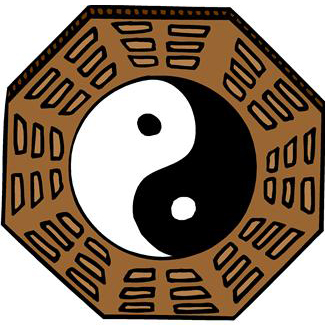 9. Take Tai Chi lessons. As with kung fu, these lessons would not be learned to assault the bully. They would be to learn to be patient, forgiving and stress free while we became confident, fluid in movement and skilled at understanding give and take.
9. Take Tai Chi lessons. As with kung fu, these lessons would not be learned to assault the bully. They would be to learn to be patient, forgiving and stress free while we became confident, fluid in movement and skilled at understanding give and take.
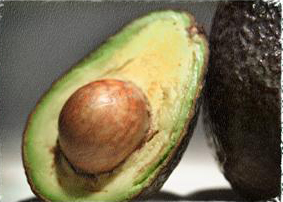
 I’ve always loved avocados, but it wasn’t until I finally got around to experimenting with them that I realized just how truly versatile they are. Like most Americans, I’ve been pretty narrow in my avocado repertoire, sticking to salads, sandwiches, and dips. But …there’s a wide range of uses for avocado, from serving it hot in stews and soups to making it the starting point for delicious smoothies and desserts.
I’ve always loved avocados, but it wasn’t until I finally got around to experimenting with them that I realized just how truly versatile they are. Like most Americans, I’ve been pretty narrow in my avocado repertoire, sticking to salads, sandwiches, and dips. But …there’s a wide range of uses for avocado, from serving it hot in stews and soups to making it the starting point for delicious smoothies and desserts.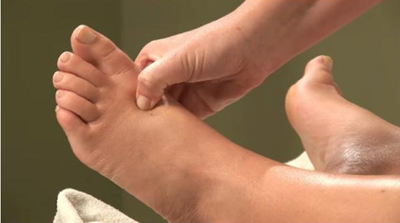
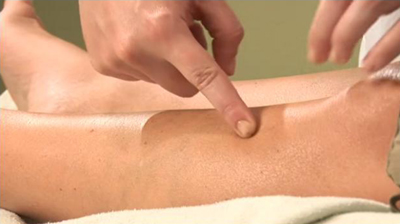 Now, Stomach-36 is a common point for regulating digestion. It has an auto regulating effect on the digestion, meaning that it can be used for things like diarrhea and constipation.
Now, Stomach-36 is a common point for regulating digestion. It has an auto regulating effect on the digestion, meaning that it can be used for things like diarrhea and constipation.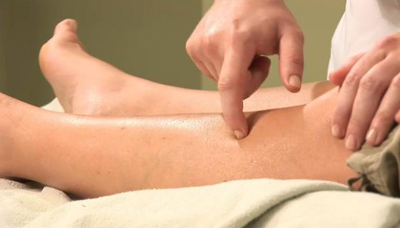 Another technique, known as tapping, is also effective here. You just want to tap on the point for about 30 seconds, at a time. Now, like all points, this point is found bilaterally on the body. So, you can find it on both legs. [Do it on both legs.]
Another technique, known as tapping, is also effective here. You just want to tap on the point for about 30 seconds, at a time. Now, like all points, this point is found bilaterally on the body. So, you can find it on both legs. [Do it on both legs.]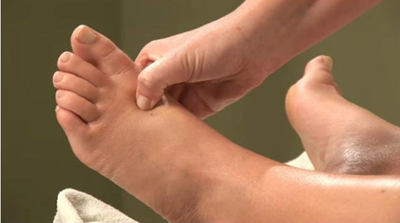 So, to locate Liver-3, it is in the hollow, between the first and second metatarsal bones. And again, your finger will kind of fall into a dip here, just before the bones begin to close. Now, Kidney-1 is on the bottom of the foot, almost directly below Liver-3.
So, to locate Liver-3, it is in the hollow, between the first and second metatarsal bones. And again, your finger will kind of fall into a dip here, just before the bones begin to close. Now, Kidney-1 is on the bottom of the foot, almost directly below Liver-3.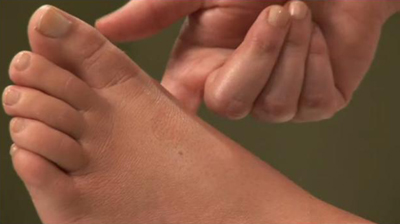 And the tapping technique is very useful for calming a mind that just won’t quit so that you can have better awareness and make good choices for yourself, as far as diet and exercise. I recommend doing this daily.
And the tapping technique is very useful for calming a mind that just won’t quit so that you can have better awareness and make good choices for yourself, as far as diet and exercise. I recommend doing this daily.
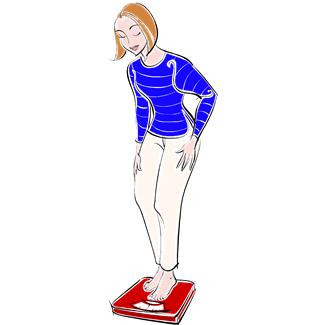 I’d like to emphasize here that some people can handle extreme diets. This is a given. But, on average, for people who have difficulty with weight loss plans, the “slow and steady wins the race” diet usually prevails because the preparation for maintenance in speed diets is usually missing.
I’d like to emphasize here that some people can handle extreme diets. This is a given. But, on average, for people who have difficulty with weight loss plans, the “slow and steady wins the race” diet usually prevails because the preparation for maintenance in speed diets is usually missing. I know that’s not a serious amount of weight compared to other people, but that was my burden and a lot of trouble for me. Every morning, I would sit up on my piece of foam (no bed in those days) and hold my gut to see how my weight was doing. Since that was the first place weight settled on me, I wanted to know how much excess I had immediately upon awakening. I would be able to calculate right away where I was, and, maybe, tiptoe over to the scale in my studio apartment and weigh in. I always knew that the day had a gray cloud over it when I woke up and had that gut, but I went about my day of getting my music therapy training, just the same.
I know that’s not a serious amount of weight compared to other people, but that was my burden and a lot of trouble for me. Every morning, I would sit up on my piece of foam (no bed in those days) and hold my gut to see how my weight was doing. Since that was the first place weight settled on me, I wanted to know how much excess I had immediately upon awakening. I would be able to calculate right away where I was, and, maybe, tiptoe over to the scale in my studio apartment and weigh in. I always knew that the day had a gray cloud over it when I woke up and had that gut, but I went about my day of getting my music therapy training, just the same.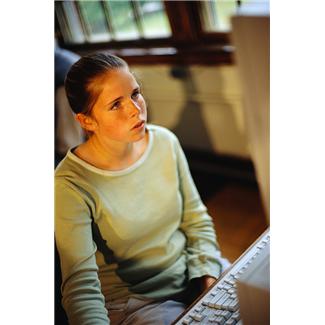 In all three settings, some students are very much connected with fellow students through electronic messaging, electronic tracking of friends’ physical whereabouts through standard phone apps that identify of their friends; others of us try to be invisible in school, hibernate in our homes, only showing our head when we have study groups or meetings by webcam, even while getting college degrees or running full time careers.
In all three settings, some students are very much connected with fellow students through electronic messaging, electronic tracking of friends’ physical whereabouts through standard phone apps that identify of their friends; others of us try to be invisible in school, hibernate in our homes, only showing our head when we have study groups or meetings by webcam, even while getting college degrees or running full time careers. Or, if someone is looking, waving is always good. Then, get up and continue along your way. As a reminder, put a tiny sign on the wall near your feet in the bedroom, across from wherever you look in the bathroom, by the bathroom exit, in the kitchen, at your chair and, definitely, on your phone.
Or, if someone is looking, waving is always good. Then, get up and continue along your way. As a reminder, put a tiny sign on the wall near your feet in the bedroom, across from wherever you look in the bathroom, by the bathroom exit, in the kitchen, at your chair and, definitely, on your phone.





